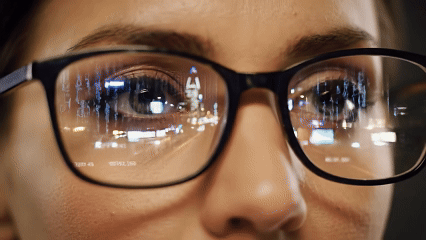- Eyeglasses
- Glasses
- Shop By Frame
- Shop By Style
- Featured
- Premium Selection
- Sunglasses
- Kids' Glasses
- Readers
- Shop By Lens
- Promium Selection
- Accessories
- My Orders
- Order Tracking
- Blog
- Have a Question?
- E-mail:cs@efeglasses.com

The Evolution of Eyewear: From Ancient Tools to Modern Style
Today, glasses are a symbol of both vision correction and personal style — but their origins stretch back centuries. From rudimentary lenses in ancient times to today’s sleek, stylish frames, eyewear has come a long way. At EFE Glasses, we believe understanding the history of glasses helps us appreciate the craftsmanship and innovation that go into every pair we wear today.

The Earliest Vision Aids
The earliest evidence of vision assistance dates to ancient civilizations. Roman philosopher Seneca once used a glass globe of water to magnify text — an early form of a magnifying lens. By the 13th century, early “reading stones” appeared in Europe, made from polished glass or quartz. These tools were handheld and primitive, but they marked the beginning of optical innovation.
The Invention of Spectacles
Around the late 1200s in Italy, the first wearable glasses were created. These early designs balanced two convex lenses in a frame made of wood, bone, or metal. They were held up by hand or balanced on the nose — no temples or ear support yet. Despite their simplicity, these early spectacles were a breakthrough for literacy and daily life, particularly for monks and scholars.
Glasses Go Global
As knowledge of optics spread through Europe and into Asia, glasses began to evolve. In the 1700s, temples (the arms that sit on the ears) were introduced, allowing glasses to rest securely on the face. By the 19th century, eyeglasses became more accessible to the public. Different lens shapes, materials, and frame styles emerged — glasses were no longer only for the wealthy or academic elite.

The Story of Glasses: From Ancient Tools to Everyday Style
Glasses have a long and fascinating history — one that spans over 700 years of innovation, craftsmanship, and evolving fashion. From rudimentary reading aids to sleek modern accessories, eyewear has always played a crucial role in how we see the world. At EFE Glasses, we believe that knowing where glasses came from makes us appreciate them even more today.
The Birthplace of Eyeglasses
The very first pair of eyeglasses is believed to have been created in Pisa, Italy, in the late 13th century. These early models featured convex lenses held in frames made of leather, bone, or metal — with rivets at the center so they could perch on the nose or be handheld. At the time, they were mostly worn by monks and scholars who needed visual assistance for reading and writing. By the 14th century, eyeglasses had become more common, especially among the educated and wealthy. But it wasn’t until the invention of the printing press in 1440 that glasses truly began to reach the general public.
From Practical Tools to Fashion Staples
Glasses have evolved far beyond their original purpose. Today, they’re as much about self-expression as they are about clarity. At EFE, we celebrate the rich heritage of eyewear with a wide collection that blends function, comfort, and modern style. Whether you need reading glasses, progressive lenses, or stylish frames to match your everyday look, our curated selection has something for everyone — men, women.
See Clearly, Live Fully
Your perfect pair of glasses is more than just a prescription — it's a reflection of your personality and lifestyle. Explore our full collection at EFE Glasses and find a frame that brings history, fashion, and vision together in one look.
SUBSCRIBE & SAVE
- Shop All
- Best Sellers
- Eyeglasses
- Sunglasses
- Reading Glasses
- Shop By Frame
- Shop By Style
- Glasses Colors
- Black Glasses
- Blue Glasses
- Brown Glasses
- Gold Glasses
- Green Glasses
- Orange Glasses
- Pink Glasses
- Red Glasses
- Yellow Glasses
- Silver Glasses
- White Glasses
- Purple Glasses
- Tortoiseshell Glasses
- Clear Glasses
- Transparent Grey Glasses
- Mens Blue Glasses Frames
- Red Sunglasses
- Rose Gold Glasses
- White Frame Sunglasses
- Black And Clear Eyeglass Frames
- Black And Gold Glasses
- Black And Red Glasses
- Black Glasses For Women
- Black Rectangle Glasses
- Black Rectangle Sunglasses
- Blue Light & Blocking Glasses
- Blue Women Eyeglasses
- Tips & Guides
- About EFE
- Shop



















